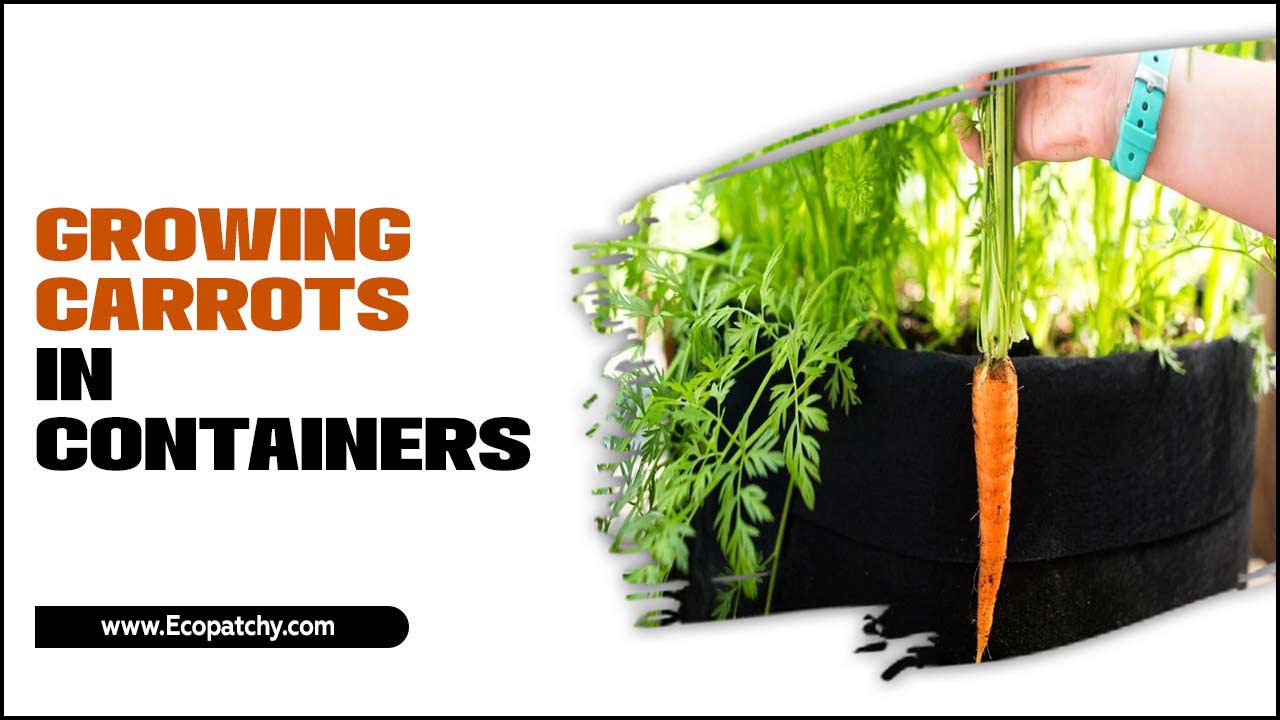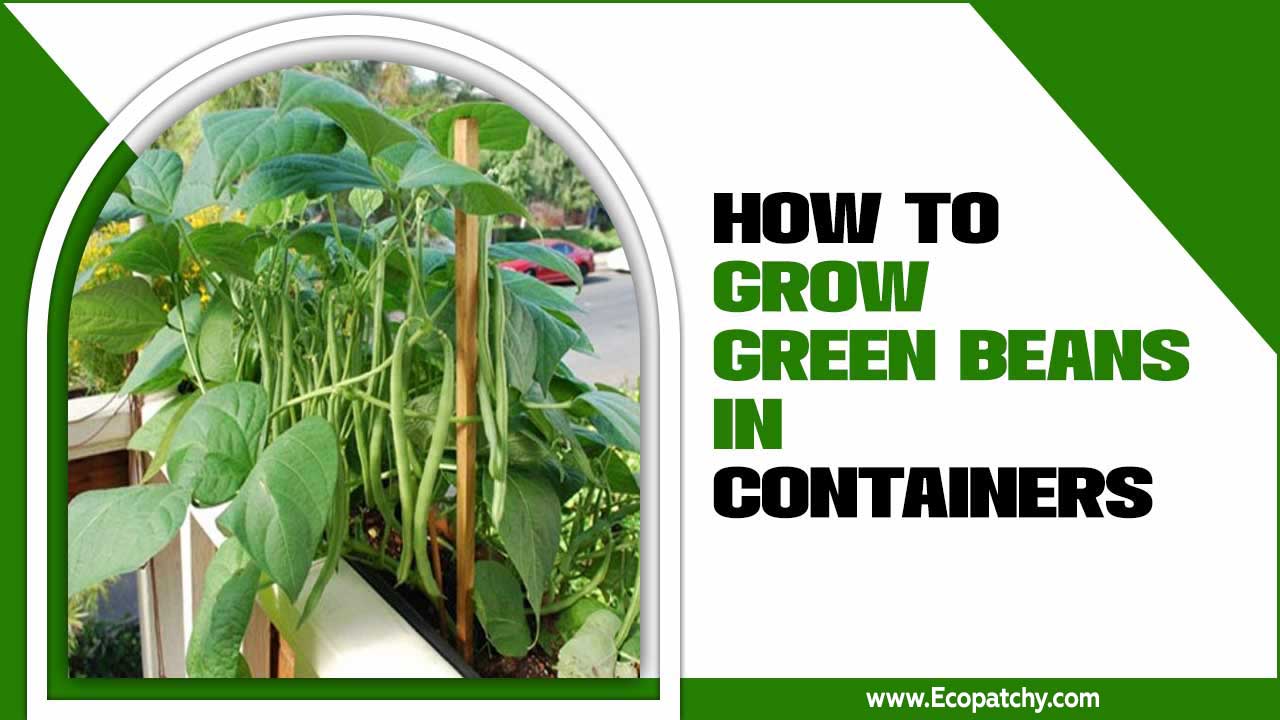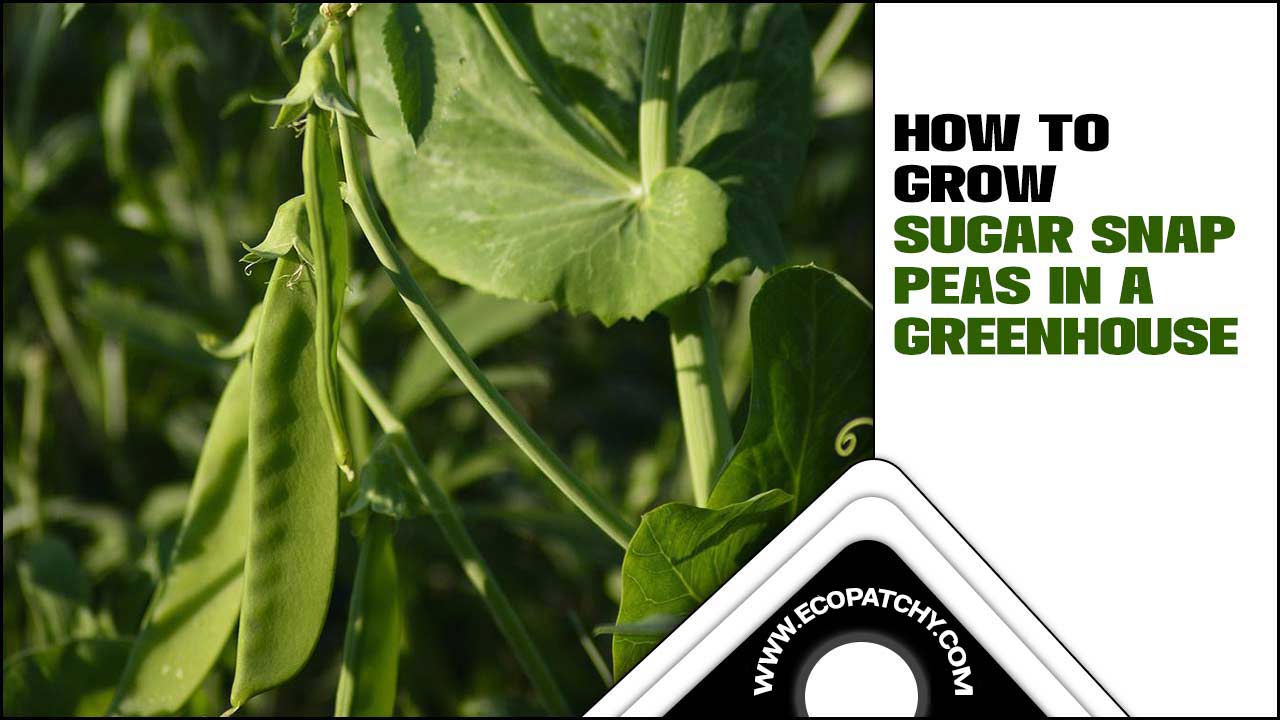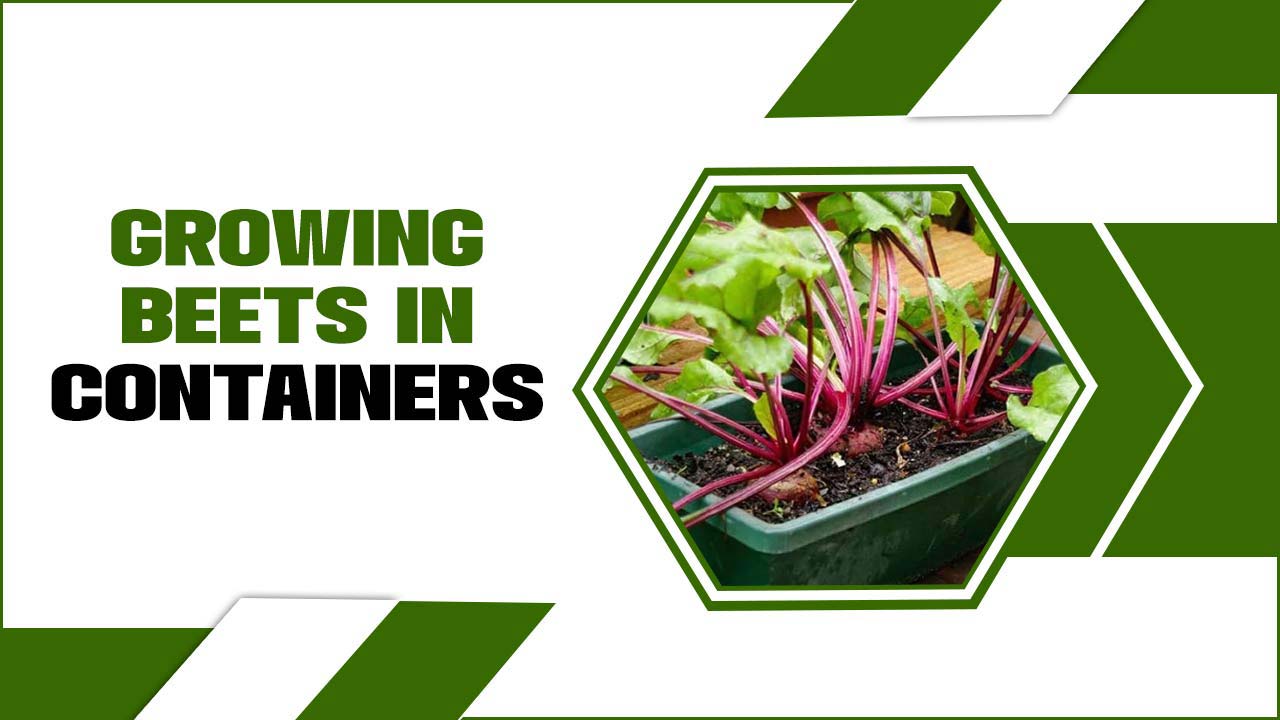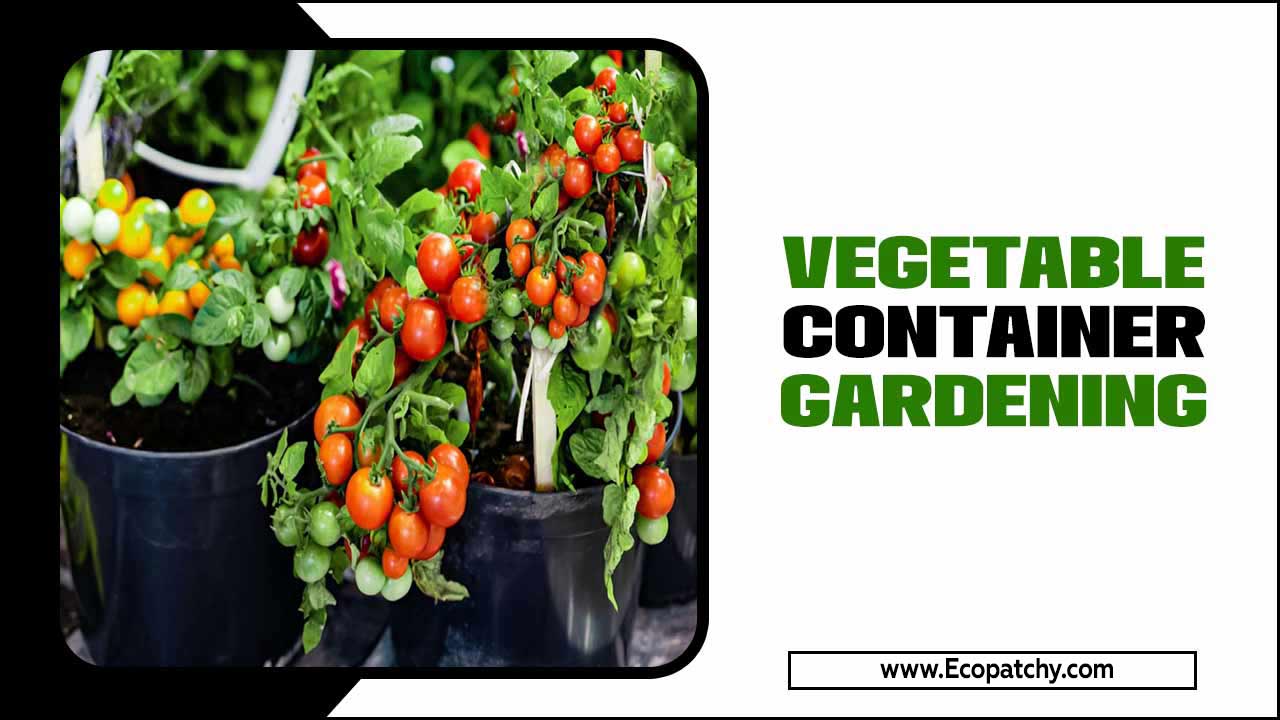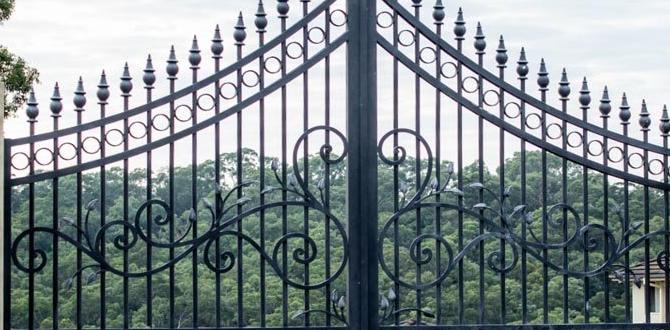Peas are versatile and nutritious vegetable easily grown in containers, making them a great option for urban or small-space gardening. Peas can add a touch of green to any balcony, patio, or window sill with their delicate vines and sweet pods.
However, growing peas in a container requires knowledge and preparation to yield a successful harvest. Here, we will delve into the basics of growing peas in containers, covering everything from choosing the right container and soil to caring for your plants and troubleshooting common issues.
Whether you are a novice gardener looking to dip your toes into container gardening or a seasoned pro looking to add a new crop to your repertoire, we will provide you with all the information you need to grow peas in containers successfully. So grab your gardening gloves, and let’s begin this journey of growing peas in container 101.
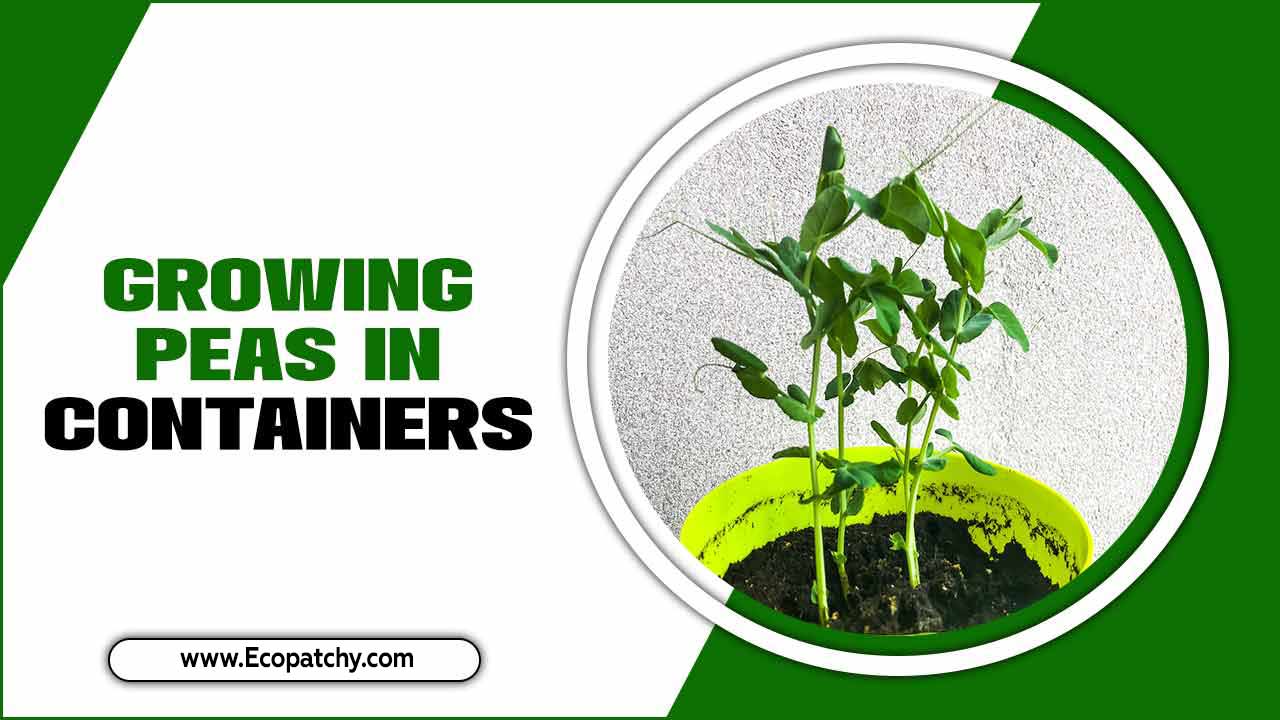
Growing Peas In Containers 101 – Full Discussion
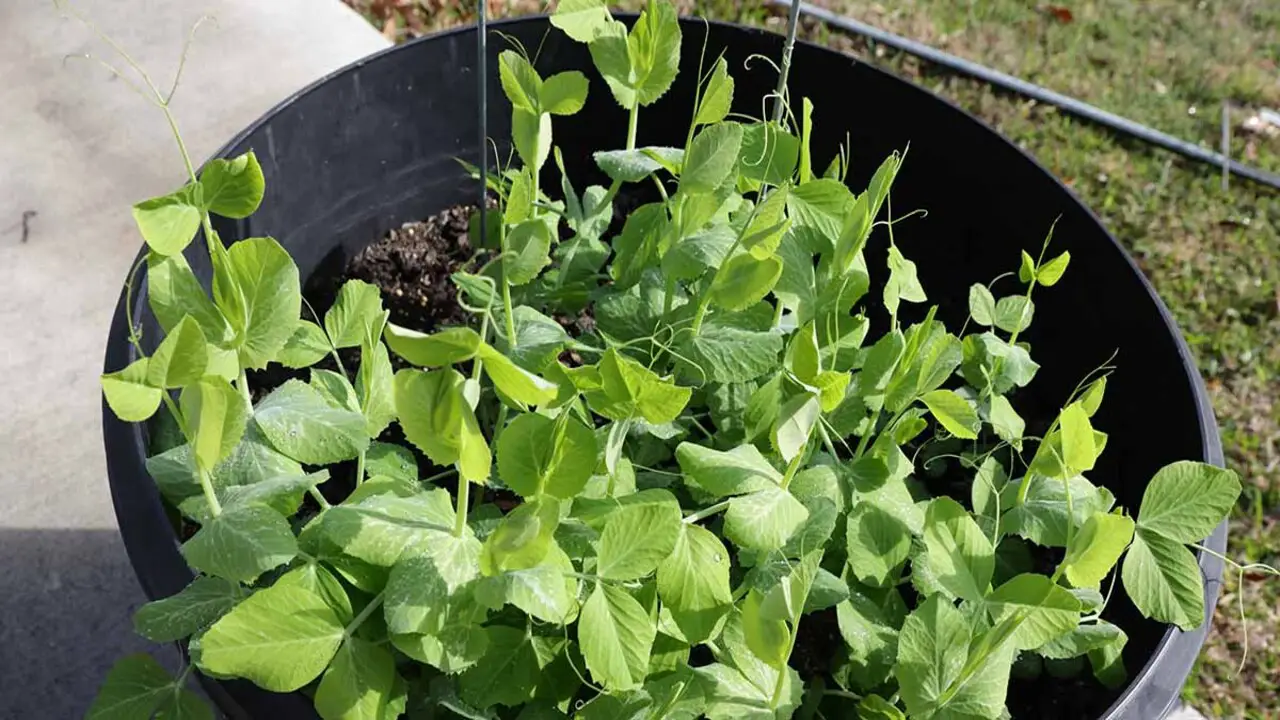
Here to know the answer Growing Peas In Containers? Peas, a popular legume, is a versatile and nutritious addition to any home garden. These plants typically require a moderate growing period, taking approximately 60 to 70 days from seed to maturity.
It is important to note that peas have shallow root systems, which makes them ideal candidates for cultivation in planters or raised beds. When choosing your containers, opt for ones at least 8 inches deep, but consider going up to 18 inches deep to provide ample space for the roots to grow and thrive.
To ensure successful growth, sow the pea seeds at a depth of 1 to 2 inches, spacing them at least 1 inch apart. This will allow enough room for each plant to receive adequate sunlight, water, and nutrients. It is worth mentioning that peas thrive in cool weather conditions, making them an excellent choice for early spring or late summer planting.
Advantages Of Growing Peas In Pots
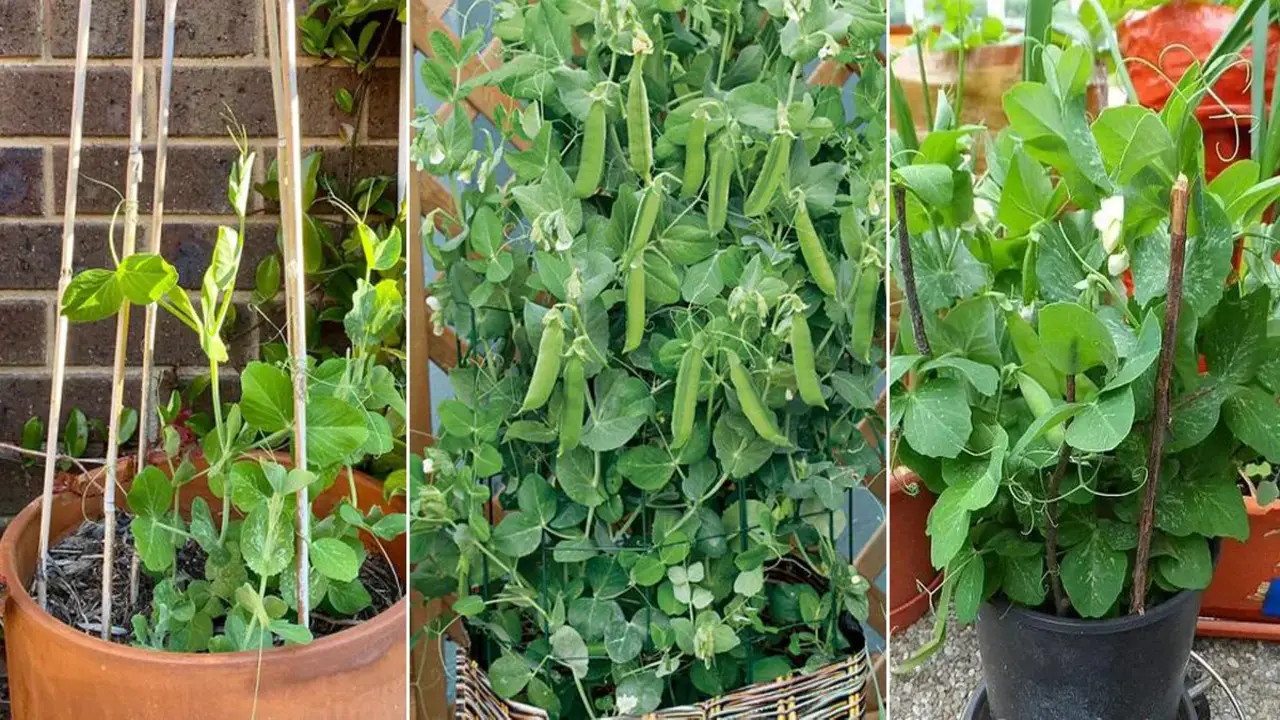
Advantages of growing peas in pots Growing peas in containers offers several advantages for gardeners. It allows individuals with limited space, such as those living in apartments or urban areas, to enjoy the benefits of fresh peas.
Containers can be placed on balconies, patios, or even windowsills, making them accessible to a wide range of people. There are several advantages to growing peas in pots:
- Space-Saving: Growing peas in pots saves space, making it an ideal option for those with limited garden space or who only have a balcony or patio.
- Mobility: Pots provide the flexibility to move your pea plants around to take advantage of optimal sunlight or protect them from extreme weather conditions.
- Better Control: Growing peas in pots gives you better control over soil quality, drainage, and moisture levels, ensuring optimal growing conditions for your plants.
- Easy Maintenance: Potted pea plants are generally easier to maintain than those grown in traditional garden beds. You can monitor their growth, treat pest or disease issues promptly, and easily support climbing varieties.
- Extended Growing Season: You can start planting earlier with potted peas, as containers warm up faster than garden soil. You can also extend the growing season by moving the pots indoors or to a greenhouse when the weather starts
Disadvantages Of Growing Peas In Containers
Disadvantages of growing peas in containers Despite the numerous benefits of growing peas in containers, there are a few disadvantages to consider. One major disadvantage is the limited space for root growth. Peas have a deep root system, and when confined to containers, their roots may become restricted, leading to stunted growth and reduced yields. There are a few disadvantages of growing peas in containers:
- Limited Root Space: Peas have deep root systems, and containers may not provide enough space for their roots to develop fully. This can restrict their growth and affect their overall health and productivity.
- 2. Watering And Nutrient Management: Container-grown peas require careful attention to watering and nutrient management. Containers tend to dry out more quickly than garden soil, so you must monitor the moisture levels closely to prevent the peas from drying out or becoming waterlogged. Additionally, container soil may deplete nutrients faster, requiring regular fertilization to ensure healthy growth.
- Support Requirements: Peas are climbing plants requiring vines’ support. In containers, providing adequate support for the plants to climb and thrive can be challenging. The peas may become tangled or fall over without proper support, leading to reduced yields.
How To Grow Peas In Containers
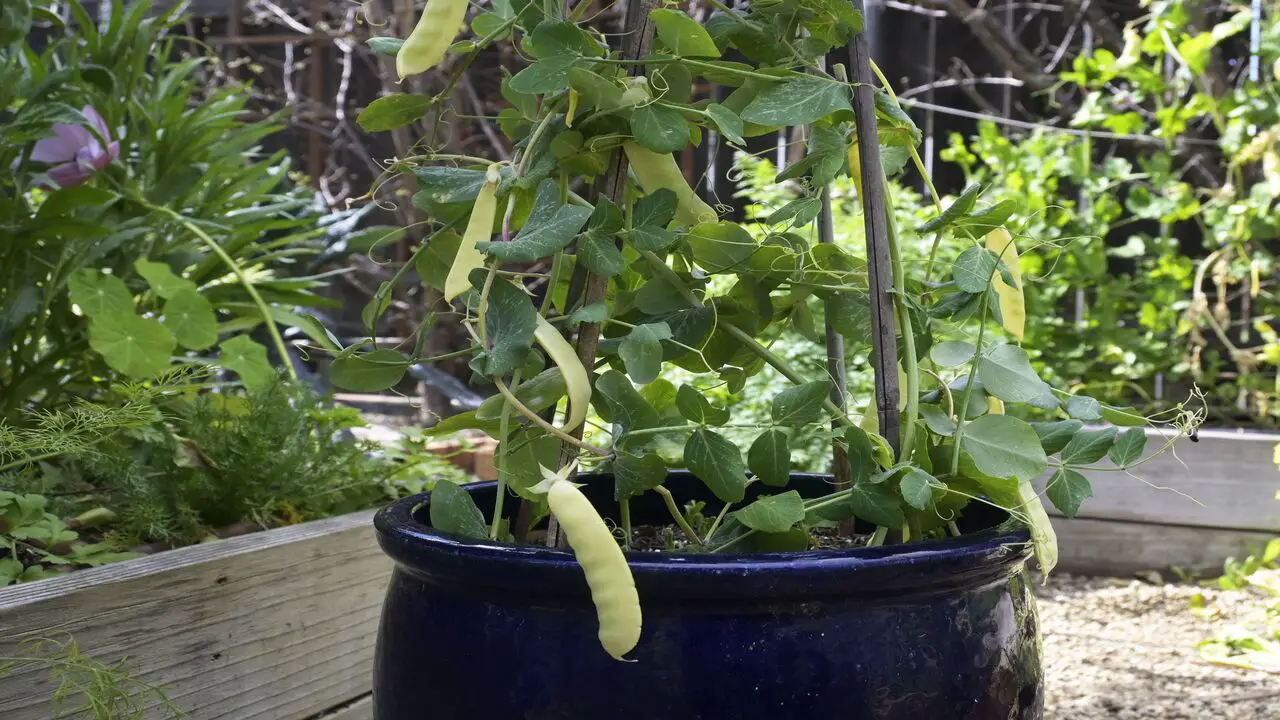
Growing peas in containers is a great option for those with limited space or want a portable garden. Not only are peas easy to grow in containers, but they also provide a bountiful harvest of delicious, sweet peas. To start growing peas in containers, it is important to choose the right variety.
There are dwarf varieties specifically bred for container gardening, such as ‘Little Marvel’ and ‘Pisello Nano’. Here are some steps to successfully grow peas in containers:
- Choose The Right Container: Select a container at least 12 inches deep and wide enough to accommodate the pea plants. Make sure it has drainage holes at the bottom to prevent waterlogging.
- Select The Right Pea Variety: Look for dwarf or bush varieties of peas, as they are more suitable for container gardening. They require less vertical space and have shorter maturity times.
- Prepare The Soil: Use a well-draining potting mix enriched with organic matter. Peas prefer slightly acidic soil with a pH between 6 and 7. Mix in some compost or aged manure to provide essential nutrients.
- Sow The Seeds: Plant the pea seeds about 1-2 inches deep, spacing them 2-3 inches apart if using a trellis or support.
Container size
Container size is an important factor to consider when growing peas in containers. Peas have deep root systems, so it is recommended to use containers that are at least 12 inches deep. In terms of width, a container that is 18 inches wide or larger is ideal to provide enough space for the pea plants to grow and spread.
This allows for proper root development and optimum growth of the plants. Additionally, ensure the container has adequate drainage holes to prevent waterlogging and root rot. You can create a suitable environment for successfully growing peas in containers by choosing the right container size.
Soil Requirements For Growing Peas
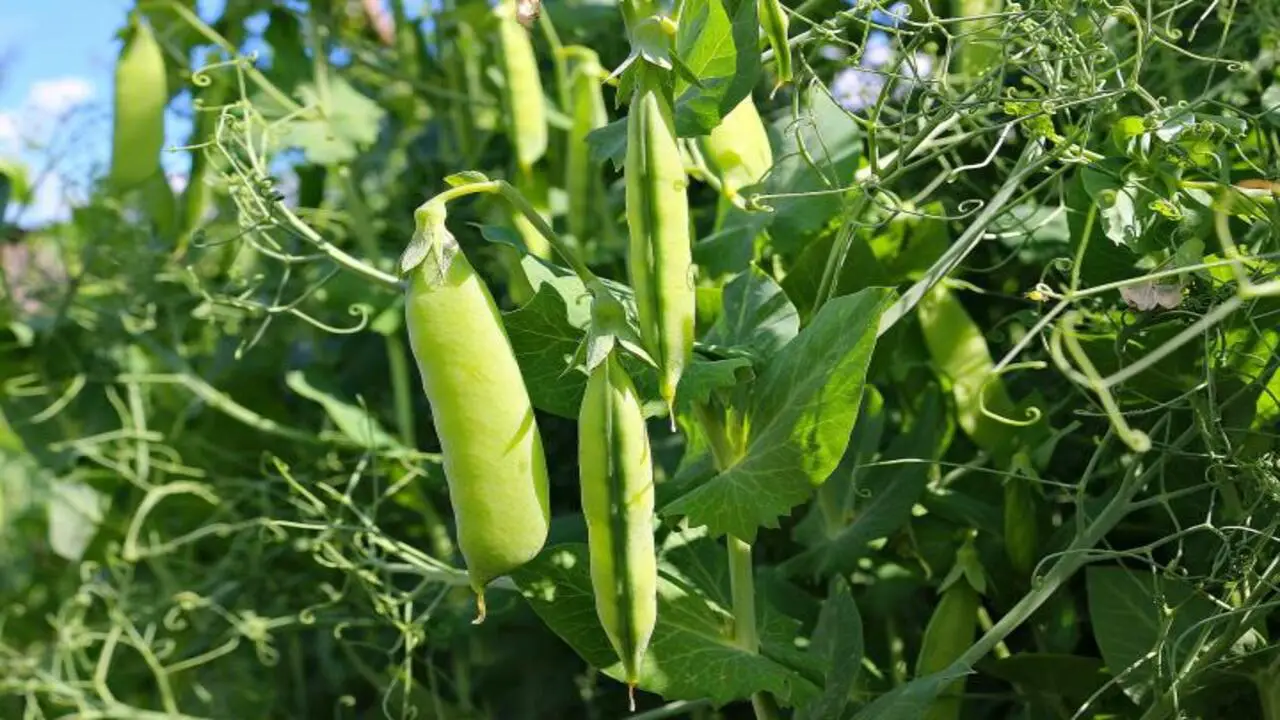
To grow peas in containers, paying attention to the soil requirements is important. Peas thrive in well-draining soil that is rich in organic matter. When selecting a container for growing peas, choose one at least 12 inches deep to allow sufficient space for the roots to grow.
Additionally, ensure the container has drainage holes to prevent waterlogging, which can lead to root rot. Fill the container with a high-quality potting mix specifically formulated for vegetable gardening. Here are some key points to consider:
- Soil Type: Peas prefer slightly acidic to neutral soil with a pH range of 6.0 to 7.0. Sandy loam or loamy soil works best, providing good drainage while retaining enough moisture.
- Soil Fertility: Before planting, it is recommended to amend the soil with compost or well-rotted manure to improve its fertility. This helps provide essential nutrients for healthy growth.
- Drainage: Adequate drainage is crucial for peas. Ensure that your container has drainage holes at the bottom to prevent waterlogging, which can lead to root rot.
- Moisture Retention: Peas require consistent moisture, but overwatering should be avoided. Maintaining balance by watering the plants when the top inch of soil feels dry.
Inoculation Of Pea Seeds
A inoculação de sementes de ervilha é um processo importante para promover o crescimento saudável das plantas. A inoculação envolve a aplicação de bactérias benéficas às sementes de ervilha, especificamente do gênero Rhizobium.
Essas bactérias têm uma relação simbiótica com as plantas de ervilha, ajudando a fixar o nitrogênio do ar e tornando-o disponível para as plantas. A inoculação das sementes de ervilha pode ser feita facilmente em casa.
Primeiro, adquira uma embalagem de inoculante de sementes de ervilha em uma loja de jardinagem ou online. Esses inoculantes geralmente vêm na forma de um pó ou granulado e contêm as bactérias benéficas necessárias.
Trellis Requirements
It is essential to consider the trellis requirements. Peas are climbing plants that require support as they grow, and a trellis provides the necessary structure to climb upon. The trellis should be sturdy and tall enough to accommodate the height that peas can reach, which can vary depending on the cultivar. nformações sobre os requisitos de treliça para o cultivo de ervilhas em recipientes:
- Tamanho Da Treliça: Ao cultivar ervilhas em recipientes, é importante fornecer um suporte vertical para ajudar as plantas a se agarrarem. Recomenda-se uma treliça com altura mínima de 1,5 metros para permitir que as ervilhas cresçam adequadamente.
- Material Da Treliça: A treliça pode ser feita de vários materiais, como madeira, metal ou plástico. Certifique-se de escolher um material durável e resistente para suportar o crescimento das ervilhas e o peso das vagens.
- Espaçamento Da Treliça: As ervilhas precisam de espaço para se enrolarem e se agarrarem à treliça à medida que crescem.
How To Care For Pea Plants
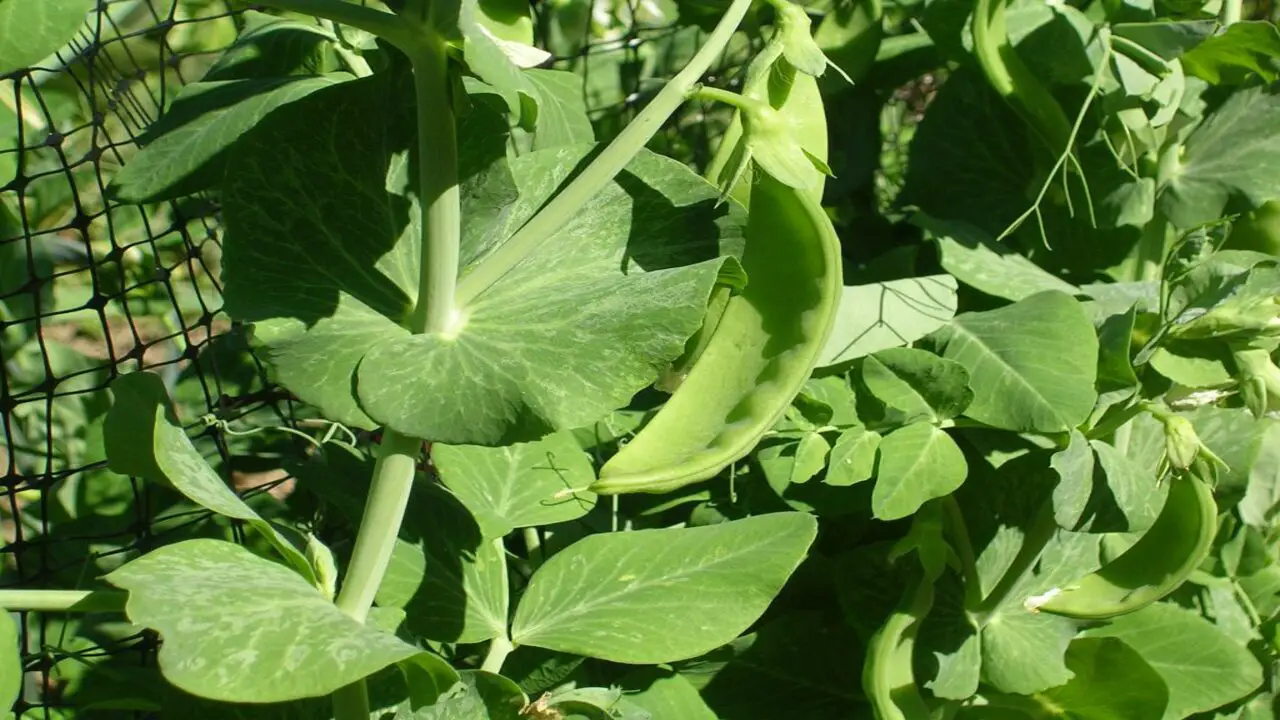
Growing peas in containers can be a rewarding and enjoyable experience. Not only do peas provide a delicious addition to any meal, but they also offer many health benefits. By growing peas in containers, even those with limited outdoor space can enjoy the satisfaction of harvesting their fresh vegetables.
Container gardening allows for greater control over the growing conditions, making it easier to create the ideal environment for peas to thrive. Here are some tips on how to care for pea plants:
- Container Selection: Choose a container that is at least 12 inches deep and wide enough to accommodate the growth of your pea plants. Ensure that it has drainage holes at the bottom to prevent waterlogging.
- Soil Requirements: Peas prefer well-draining soil with a slightly acidic to neutral pH (around 6.0-7.5). Use a high-quality potting mix or create a mixture of compost, garden soil, and perlite for better drainage.
- Planting: Sow pea seeds about 2 inches deep and 2-3 inches apart in the container. If using a trellis or support, place it in the container before planting.
- Sunlight And Temperature: Peas thrive in full sun, so place the container in a location that receives at least 6-8 hours of direct sunlight daily.
Pests And Diseases
Pests and diseases can affect pea plants grown in containers, like in traditional garden beds. Some common pests that can attack pea plants include aphids, pea weevils, and slugs. Aphids are small insects that suck the sap from the plants, causing stunted growth and distorted leaves.
Pea weevils are beetles that lay their eggs on the pea pods, and the larvae feed on the developing seeds. Slugs are slimy creatures that will eat the young pea seedlings and leave holes in the leaves.
To prevent pests from infesting your pea plants, you can use organic pest control methods such as regularly inspecting the plants for signs of infestation and manually removing the pests. Additionally, you can encourage beneficial insects like ladybugs and lacewings to help control aphid populations.
Watering And Irrigation Tips For Container-Grown Peas
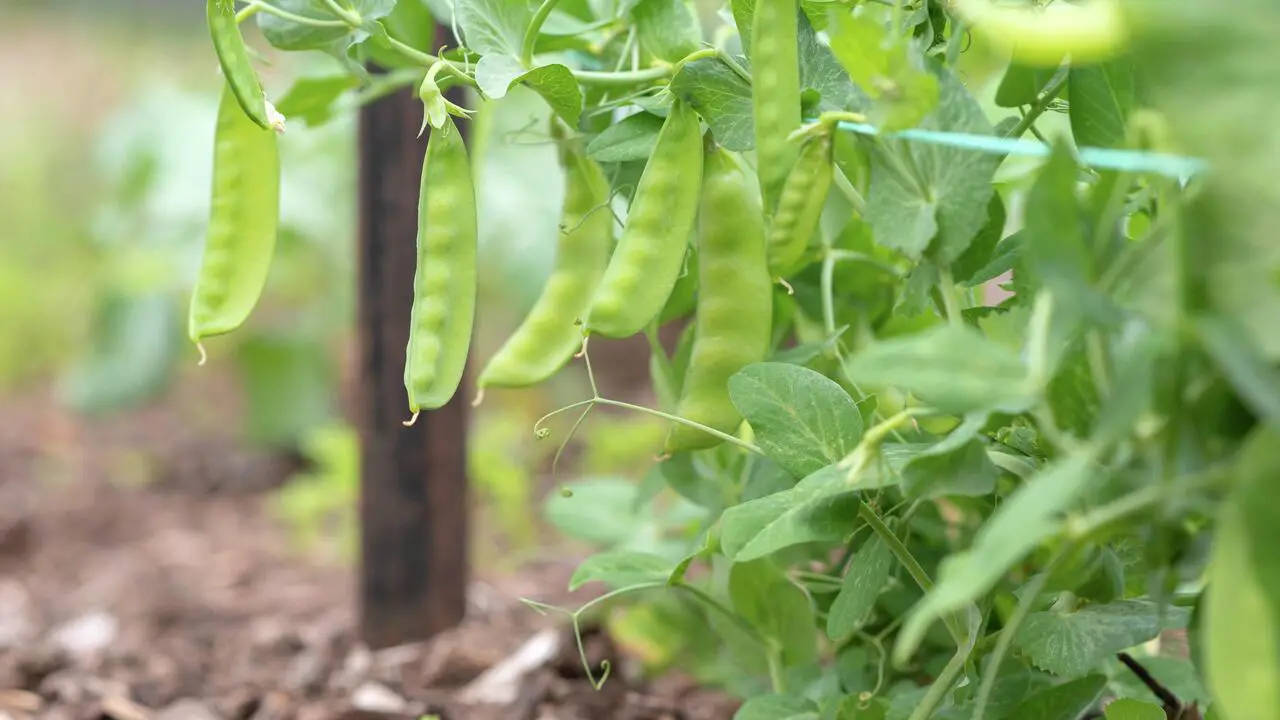
Watering and irrigation are crucial aspects of growing peas in containers. Peas require consistent moisture to thrive, and container gardening requires more attention to watering than traditional garden beds.
When growing peas in containers, it is important to strike a balance between keeping the soil consistently moist without overwatering. Overwatering can lead to root rot and other fungal diseases. Here are some tips to ensure proper watering and irrigation for your container-grown peas:
- Moisture is essential for pea plants, so keep the soil consistently moist. Check the moisture level regularly by sticking your finger about an inch deep into the soil. If it feels dry, it’s time to water.
- Avoid overwatering, as it can lead to root rot and other problems. Ensure proper container drainage by adding drainage holes at the bottom and using a well-draining potting mix.
- Water your container-grown peas deeply and thoroughly, allowing the water to reach the roots. Avoid watering just the surface, as it can encourage shallow root growth.
- Consider using a drip irrigation system or a soaker hose to provide consistent and controlled watering. This helps in delivering water directly to the roots and avoids wetting the foliage, which can lead to disease issues.
How And When To Harvest Peas
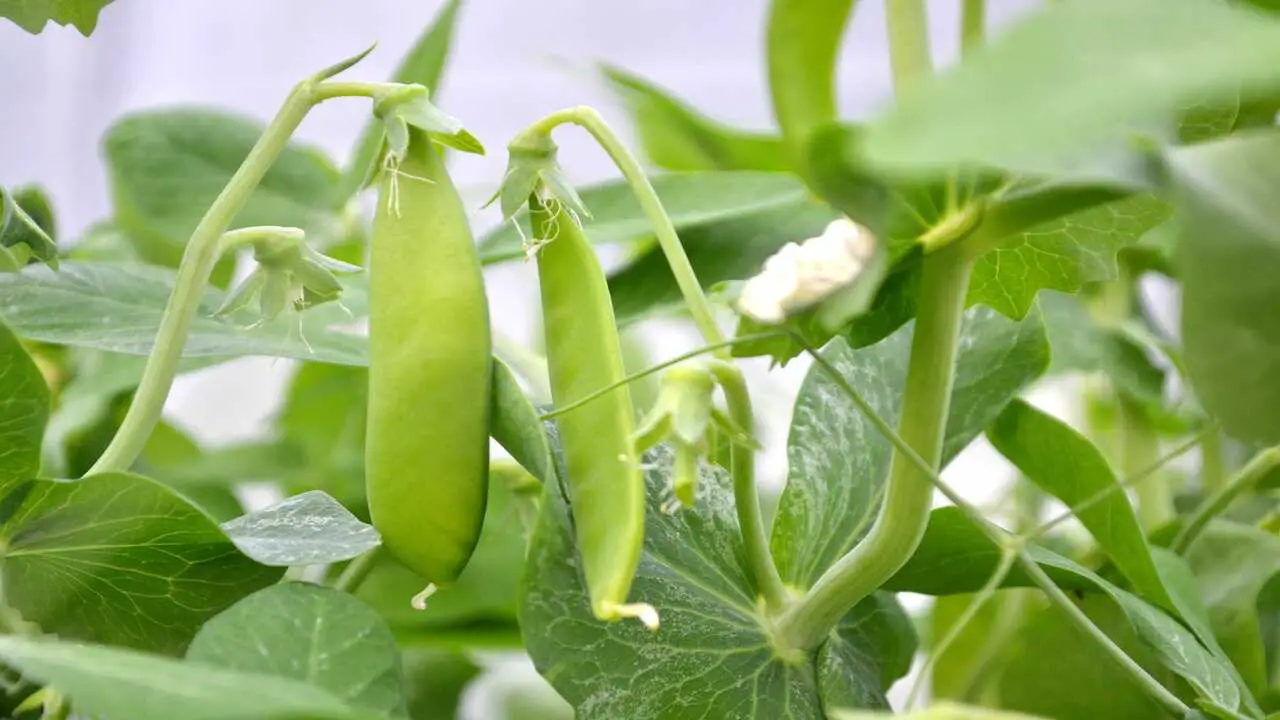
To harvest peas in containers, knowing the right time to pick them is important. Peas should be harvested when their pods are plump and full but before they become too mature and tough.
Gently hold the vine with one hand and use the other hand to snap off the pods, ensuring that you do not damage the plant. Harvesting peas in the morning when the pods are cool is recommended, as this helps retain their freshness and sweetness. Follow these steps:
- Timing: Peas are typically ready for harvest around 60-70 days after planting. Check the seed packet or plant label for the specific variety you are growing, as harvest times can vary.
- Observation: Keep an eye on your pea plants as they mature. Look for signs that the pods are plump and filled with peas. The pods should be bright green and feel firm to the touch.
- Test: To ensure the peas are ready for harvest, you can perform a taste test. Open a pod and sample a few peas to check if they have reached the desired level of sweetness and tenderness.
- Harvesting: When the peas are ready, use your thumb and index finger to snap or cut the pods from the vine. Be careful not to damage the plant or nearby pods in the process.
- Continuous Harvest: Peas can continue to produce more pods if you harvest them regularly.
Try Growing Peas In Containers
Growing peas in containers is a great way to enjoy fresh, homegrown peas even with limited space. This comprehensive guide will cover all the essential steps and tips to grow peas in containers successfully. First and foremost, selecting the right container is key.
Once you have the perfect container, it’s time to prepare the soil. Peas thrive in well-draining soil enriched with organic matter. Here are some tips to help you successfully grow peas in containers:
- Choose The Right Container: Select a container that is at least 12-18 inches deep and wide enough to accommodate the root system of the pea plant.
- Use Well-Draining Soil: Peas prefer well-draining soil to prevent waterlogged roots. Use a good quality potting mix or mix compost, perlite, and peat moss.
- Provide Support: Peas are climbers, so provide a trellis, stakes, or a pea cage for them to climb on. This will help prevent the plants from toppling over as they grow.
- Sow The Seeds: Plant pea seeds about 1 inch deep and 2-3 inches apart in the container. If you are planting multiple rows, ensure there is at least 4-6 inches of space between
More Gardening Inspiration And Resources
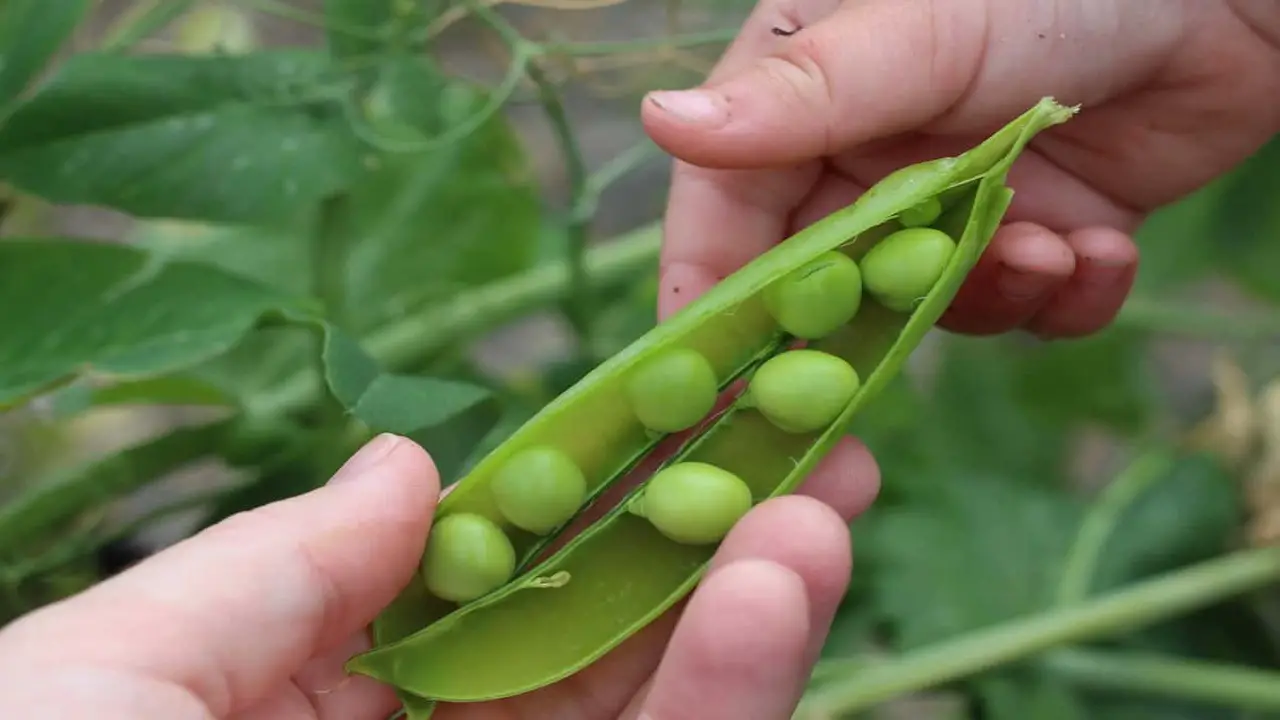
One of the best things about growing peas in containers is that it can be a great source of gardening inspiration. As you witness the peas sprouting, climbing, and producing an abundance of delicious pods, you may want to explore other types of plants that can thrive in containers. Here are some gardening inspirations and resources for growing peas in containers:
- Online Gardening Communities: Join online gardening forums and communities to connect with experienced gardeners who can provide valuable tips and inspiration for growing peas in containers. Websites like GardenWeb and Houzz have active gardening communities where you can ask questions and find inspiration.
- Gardening Books: Consider investing in gardening books focusing on container gardening or growing vegetables in small spaces. Some popular titles include “The Vegetable Gardener’s Container Bible” by Edward C. Smith and “Container Vegetable Gardening” by Amy Goldman.
- Youtube Channels: Explore YouTube channels dedicated to gardening, such as “Epic Gardening” and “Garden Answer.” These channels often feature helpful tutorials, tips, and inspiration for growing vegetables, including peas, in containers.
- Seed Catalogs: Request seed catalogs from reputable seed companies like Burpee, Johnny’s Selected Seeds, and Baker Creek Heirloom Seeds.
Conclusion
Growing peas in containers can be rewarding and successful with the right knowledge and techniques. Container gardening offers numerous advantages for those with limited space or unfavourable soil conditions. Peas are well-suited for container growing as they have shallow root systems and do not require excessive space to thrive.
With the proper container size, soil, watering, and sunlight, you can create an optimal environment for your pea plants to flourish. So let’s dive in and explore the essential tips and tricks for growing peas in containers.
By choosing the right container, providing proper support and care, and choosing the right variety of peas, you can enjoy a bountiful harvest of delicious peas from the comfort of your own home. So why not try it and add some fresh, homegrown peas to your next meal?
FAQ
1.What Type Of Container Is Best For Growing Peas In Containers?
Ans: The best type of container for growing peas in containers is a deep container with a minimum depth of 12 inches. This will provide enough space for the pea roots to grow and develop. Additionally, the container should have good drainage to prevent waterlogged soil. A container with a trellis or support system is also recommended to help the pea plants climb and grow upright.
2.How Much Sunlight Do Pea Plants Need When Grown In Containers?
Ans: Pea plants grown in containers require a minimum of 6-8 hours of direct sunlight per day for optimal growth and productivity.
3.Can Pea Plants Be Grown In Containers Indoors?
Ans: Yes, pea plants can be grown in containers indoors. Peas are well-suited for container gardening due to their compact size and shallow root system. Choose a container at least 12 inches deep and wide with drainage holes. Use well-draining soil to support climbing plants, such as a trellis or stakes.
4.What Type Of Soil And Fertilizer Should Be Used For Growing Peas In Containers?
Ans: Peas Thrive In Well-Draining Soil With A Slightly Acidic Ph Between 6.0 And 7.0. A Mixture Of potting soil, compost, and perlite or vermiculite is recommended for container-grown peas.
As for fertilizer, a balanced organic fertilizer or a slow-release granular fertilizer specifically formulated for vegetables can be used. It is important to follow the instructions on the fertilizer packaging to determine the appropriate amount to use.
5.Are There Any Specific Watering Or Maintenance Requirements For Growing Peas In Containers?
Ans: Peas Grown In Containers Require Regular Watering To Moisten The Soil, Especially During Hot And dry periods. The container should have good drainage to prevent waterlogged roots. Adding a layer of mulch on top of the soil can help retain moisture. Peas also benefit from regular fertilization, using a balanced fertilizer every few weeks.

